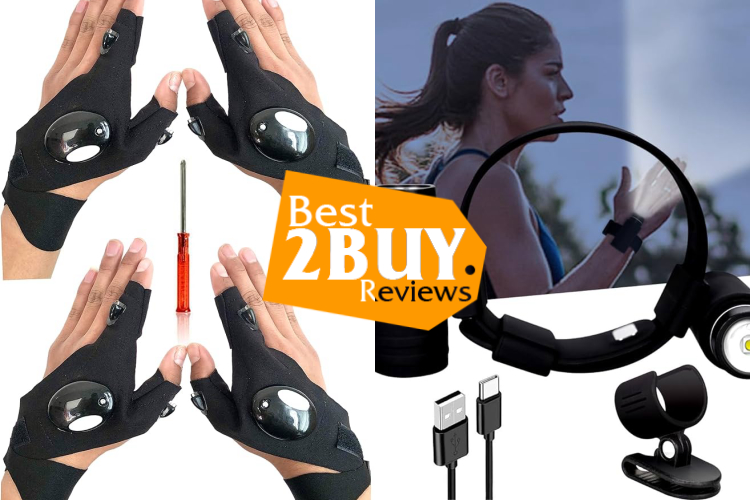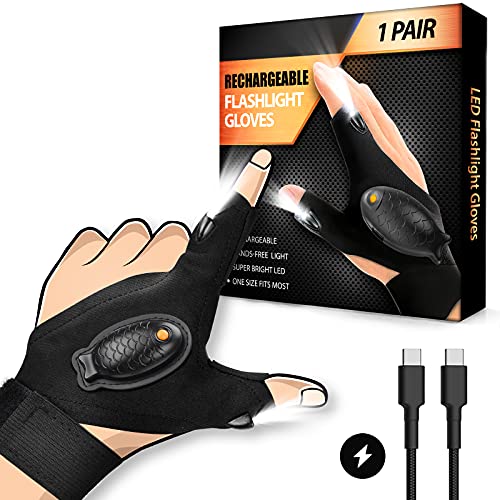Hands-Free Flashlights: The Ultimate Guide To Choosing The Right One

- 1. Hands-Free Flashlights: The Ultimate Guide To Choosing The Right One
- 1.1. What Is A Hands Free Flashlight?
- 1.2. Evolution of Hands-Free Flashlights
- 1.3. Diverse Applications
- 1.4. Advantages Of of Hands-Free Flashlights
- 1.5. Factors To Consider When Choosing A Hands-Free Flashlight
- 1.5.1. Purpose and Usage
- 1.5.2. Brightness and Lighting Modes
- 1.5.3. Beam Range and Focus
- 1.5.4. Battery Life and Power Supply
- 1.5.5. Comfort and Fit
- 1.5.6. Water Resistance and Sturdiness
- 1.5.7. Weight and Dimensions
- 1.5.8. Extra Features
- 1.5.9. Budget
- 1.6. Conclusion
Flashlights have undergone a remarkable evolution since their inception, transitioning from cumbersome, handheld gadgets to streamlined, adaptable tools that prioritize both convenience and effectiveness. Notably, hands-free flashlights have attracted considerable interest due to their practicality and versatility across different scenarios. These groundbreaking devices have transformed how people light up their environment by providing a hands-free answer to lighting obstacles. Join me in uncovering the realm of hands-free flashlights, investigating their development, wide-ranging uses, and the advantages they offer to their users.
What Is A Hands Free Flashlight?
A hands-free flashlight is a convenient portable lighting device created for use without necessitating manual hand-holding. These flashlights are typically fastened or mounted in a manner that enables users to have both hands free for other tasks while ensuring adequate illumination.
Various types of hands-free flashlights include:
- Headlamps: These are worn on the head, secured by an adjustable strap, and offer direct light in the user's immediate line of sight. They're commonly employed in outdoor pursuits such as hiking, camping, or working in poorly lit environments.
- Clip-on or magnetic flashlights: These can be affixed to clothing, belts, or magnetic surfaces, providing targeted light without the need to grasp the flashlight.
- Strap-on or wearable flashlights: These are designed to be strapped onto the arm, wrist, or any body part, granting the user easy access to a portable light source.
Hands-free flashlights are favored by outdoor enthusiasts, campers, hikers, runners, mechanics, and anyone who requires adequate lighting in dark or low-light conditions while necessitating the use of both hands for their activities.
Evolution of Hands-Free Flashlights
Conventional flashlights necessitated being held by hand, limiting the user's ability to multitask. As technology progressed, manufacturers acknowledged the demand for more adaptable lighting solutions. Thus, hands-free flashlights were developed to address this need, offering a convenient way to illuminate while freeing up the hands for other tasks.
The evolution of hands-free flashlight designs has been noteworthy. Initially, headlamps served as the primary hands-free lighting option, comprising a light fixed to a headband, allowing users to secure the device to their heads, leaving their hands completely unrestricted. Nevertheless, with technological progress, newer models with enhanced features and functionality have been introduced.
In the present day, hands-free flashlights are available in various forms, such as clip-on lights, wearable bands, magnetic lights, and even innovative designs integrated into clothing or accessories. These contemporary versions showcase improved durability, brightness, battery life, and ergonomic designs tailored to diverse user needs and preferences.
Diverse Applications
The adaptability of hands-free flashlights renders them essential in numerous sectors and everyday routines. They serve pivotal roles in various applications:
- Outdoor Pursuits: Whether engaged in camping, hiking, or biking, hands-free flashlights present a pragmatic solution for illuminating pathways, allowing individuals to use their hands for other necessary tasks.
- Professional Fields and Construction: In industries such as construction, electrical work, plumbing, and mechanical tasks, hands-free lighting is indispensable for carrying out intricate jobs within poorly lit or confined spaces.
- Emergency Scenarios: For first responders, rescue teams, and emergency service workers, hands-free flashlights are invaluable for swiftly and effectively illuminating critical situations.
- Household Applications: From DIY projects to handling power outages, these flashlights are essential for various domestic tasks, providing both convenience and reliability.
Advantages Of of Hands-Free Flashlights
The increasing popularity of hands-free flashlights stems from their manifold advantages:
- Heightened Safety: By leaving both hands free, users can maintain balance, wield tools, or navigate challenging terrain while benefiting from a consistent light source, diminishing the likelihood of accidents.
- Convenience and Enhanced Productivity: Liberating users from the constraints of a handheld flashlight significantly boosts efficiency and work output.
- Adaptability: Various designs cater to specific needs, offering lightweight headlamps for runners and sturdy, heavy-duty options for professionals, showcasing their versatility.
- Technological Advancements: Contemporary hands-free flashlights integrate cutting-edge LED technology, ensuring potent illumination coupled with extended battery life.
- Comfort and Ergonomics: Many designs prioritize comfort by using lightweight materials and adjustable straps, ensuring prolonged use without causing discomfort to the user.
Factors To Consider When Choosing A Hands-Free Flashlight
Choosing the appropriate hands-free flashlight is essential to ensure it caters to your specific requirements and offers reliability across different situations. Several crucial factors need to be taken into account when making this selection.
Purpose and Usage
Deliberate on the primary purpose of the hands-free flashlight. Whether it's for outdoor activities, professional tasks, or emergency situations, the intended use will determine necessary features like brightness levels, beam distance, and required durability.
Brightness and Lighting Modes
Assess the brightness level measured in lumens. Higher lumens typically indicate a brighter light. Additionally, having various light modes such as high, low, strobe, and red light can be advantageous for different circumstances.
Beam Range and Focus
Examine the beam distance to gauge the light's reach. Some headlamps offer adjustable focus or zoom functions for a more concentrated or dispersed beam, adaptable for different tasks.
Battery Life and Power Supply
Consider the type of batteries used by the flashlight. Some headlamps use standard AA or AAA batteries, while others utilize rechargeable lithium-ion batteries. Evaluate the estimated battery life, especially if extended use or multi-day outings are intended.
Comfort and Fit
Comfortable headbands and adjustable straps are crucial for prolonged wear. Seek padding or ergonomic designs to prevent discomfort during extended use.
Water Resistance and Sturdiness
For outdoor activities or moisture-prone situations, ensure the flashlight possesses sufficient water resistance, often indicated by an IPX rating. Additionally, evaluate the product's durability by considering the materials used in its construction.
Weight and Dimensions
The weight and size of the headlamp impact comfort and portability. Lighter and more compact models are typically preferred, particularly for activities where weight matters.
Extra Features
Certain headlamps offer additional functions like tilt capability, motion sensor activation, or red light for night vision. Assess whether these extras align with your needs and contribute value to the product.
Budget
Establish a budget range considering the features you prioritize. There are headlamps available across various price points, from budget-friendly options to high-end, feature-rich models.
Conclusion
Hands-free flashlights have unquestionably revolutionized how individuals tackle different tasks, providing convenience, safety, and effectiveness. With the continuous progression of technology, we anticipate additional advancements in their design, functionality, and performance, further solidifying their essential role in our daily routines. Whether utilized for outdoor expeditions, professional endeavors, or day-to-day activities, these hands-free flashlights serve as a symbol of innovation, illuminating the path towards a more convenient and brighter future.











